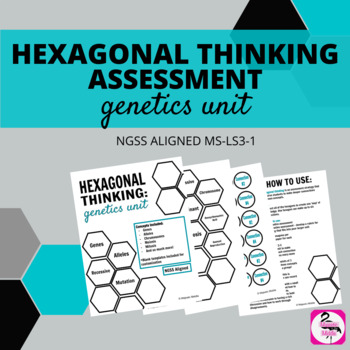Hexagonal Thinking Assessment - Genetics Unit
Majestic in the Middle
2 Followers
Grade Levels
7th - 9th
Subjects
Resource Type
Standards
CCSSRST.6-8.4
NGSSMS-LS3-1
Formats Included
- PDF
Majestic in the Middle
2 Followers
What educators are saying
I wanted to learn to use hexagonal thinking and this resource was great. It gave me directions on how to use it with students and I was able to explain to my students. I created a water properties and water cycles based on this and it went well with my students!
Description
Want students to think deeper and make connections? This resource requires students to engage in higher-order thinking by connecting concepts in the field of genetics.
Great formative or summative assessment!
Covers concepts such as:
-Mitosis
-Meiosis
-Alleles
-Genes
and so much more!
Includes blank templates for additional words and an example!
Total Pages
Answer Key
N/A
Teaching Duration
N/A
Last updated Jan 30th, 2021
Report this resource to TPT
Reported resources will be reviewed by our team. Report this resource to let us know if this resource violates TPT’s content guidelines.
Standards
to see state-specific standards (only available in the US).
CCSSRST.6-8.4
Determine the meaning of symbols, key terms, and other domain-specific words and phrases as they are used in a specific scientific or technical context relevant to grades 6–8 texts and topics.
NGSSMS-LS3-1
Develop and use a model to describe why structural changes to genes (mutations) located on chromosomes may affect proteins and may result in harmful, beneficial, or neutral effects to the structure and function of the organism. Emphasis is on conceptual understanding that changes in genetic material may result in making different proteins. Assessment does not include specific changes at the molecular level, mechanisms for protein synthesis, or specific types of mutations.


